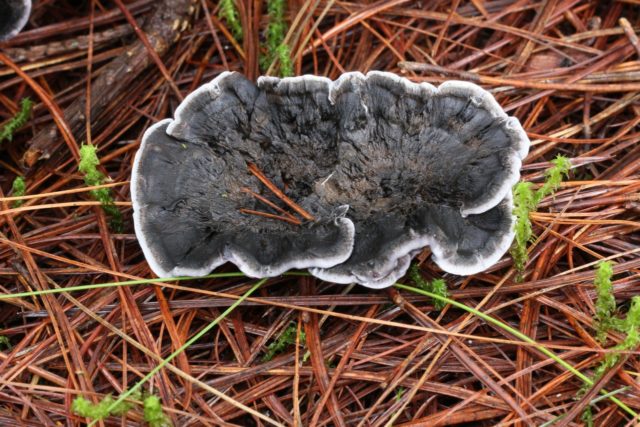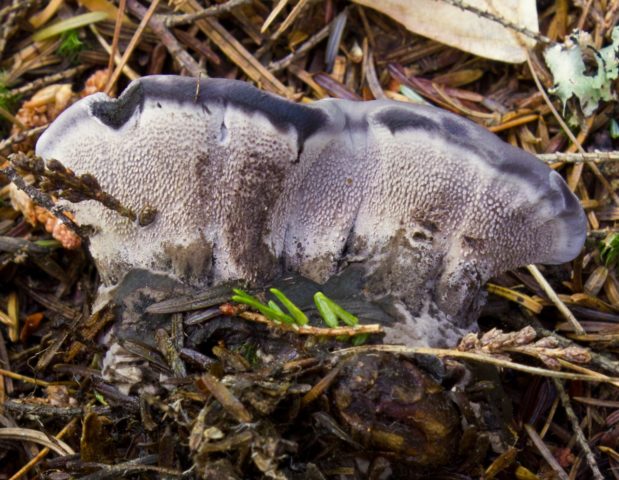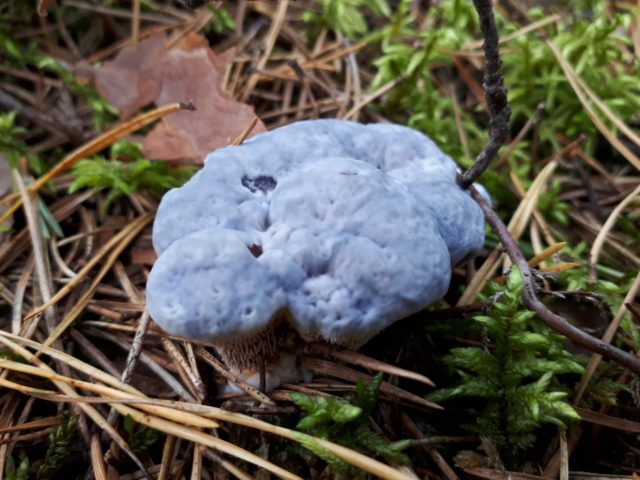Content
Phellodon black (lat.Phellodon niger) or Black Hericium is a small representative of the Bunker family. It is difficult to call it popular, which is explained not only by its low distribution, but also by a rather tough fruiting body. The mushroom does not contain any poisonous substances.
What does Phellodon black look like
In appearance, Black Hericium is similar to terrestrial tinder fungi: they are solid, shapeless, rather large and form, together with neighboring fruit bodies, whole aggregates. The peculiarity of the species is that it grows through various objects: plant shoots, small branches, needles, etc.
Description of the hat
Fellodon's hat is large and massive - its diameter can reach 4-9 cm. It is irregular and asymmetrical in shape. The border with the leg is blurry.
In young mushrooms, the cap is bluish with an admixture of gray. As it grows, it darkens noticeably, and the blue goes away. Fully ripe specimens often turn almost black.
Their surface is dry and velvety. The pulp is dense, woody, dark on the inside.
Leg description
The leg of this Ezhovik is wide and short - its height is only 1-3 cm. The diameter of the leg can reach 1.5-2.5 cm. The transition to the cap is smooth. A blurred blackening is noticeable along the border of the parts of the fruiting body.
The flesh of the leg is dark gray in color.
Is the mushroom edible or not
Phellodon is not suitable for human consumption. This species does not contain toxic substances, however, its pulp is too tough. They are classified as inedible.
Where and how it grows
The time of active growth of this species falls on the period from July to October. It is most often found in mixed and coniferous forests, especially under spruce trees, in areas covered with moss. Inside the caps, you can find needles or even whole cones. Fellodon grows both singly and in groups, however, it is usually the clusters of these mushrooms that are usually found. Sometimes they form so-called "witch circles" in groups.
On the territory of Russia, Fellodon is most often found in the Novosibirsk region and the Khanty-Mansiysk Autonomous Okrug.
Doubles and their differences
Very often, Phellodon black is confused with the fused Ezhovik - his closest relative. They are indeed very similar: both are gray in color, black in places, irregular in shape and a blurred border between different parts of the mushroom. The difference lies in the fact that the Hericium that has grown together is generally lighter in color and has numerous bends with growths over the entire area of the cap. In Black Heron's Man, bends are present only along the edges of the fruiting body. The twin is inedible.
Another twin of this species is Gidnellum blue. They have generally similar outlines of fruit bodies, however, the latter has a more saturated color of the cap. As the name suggests, it is closer to blue. Refers to inedible mushrooms.
Conclusion
Black phellodon is a small mushroom of rather inconspicuous appearance. The prevalence of this species is low, it can be found infrequently. Mostly the mushroom is found in pine forests, however, it is important to remember that it is prohibited to collect it in Russia - it is included in the Red Book. Phellodon is not used in cooking because of the rigidity of its fruiting body and fine litter that gets into it as it develops.
You can learn more about how Yezhovik looks like in the video below:













